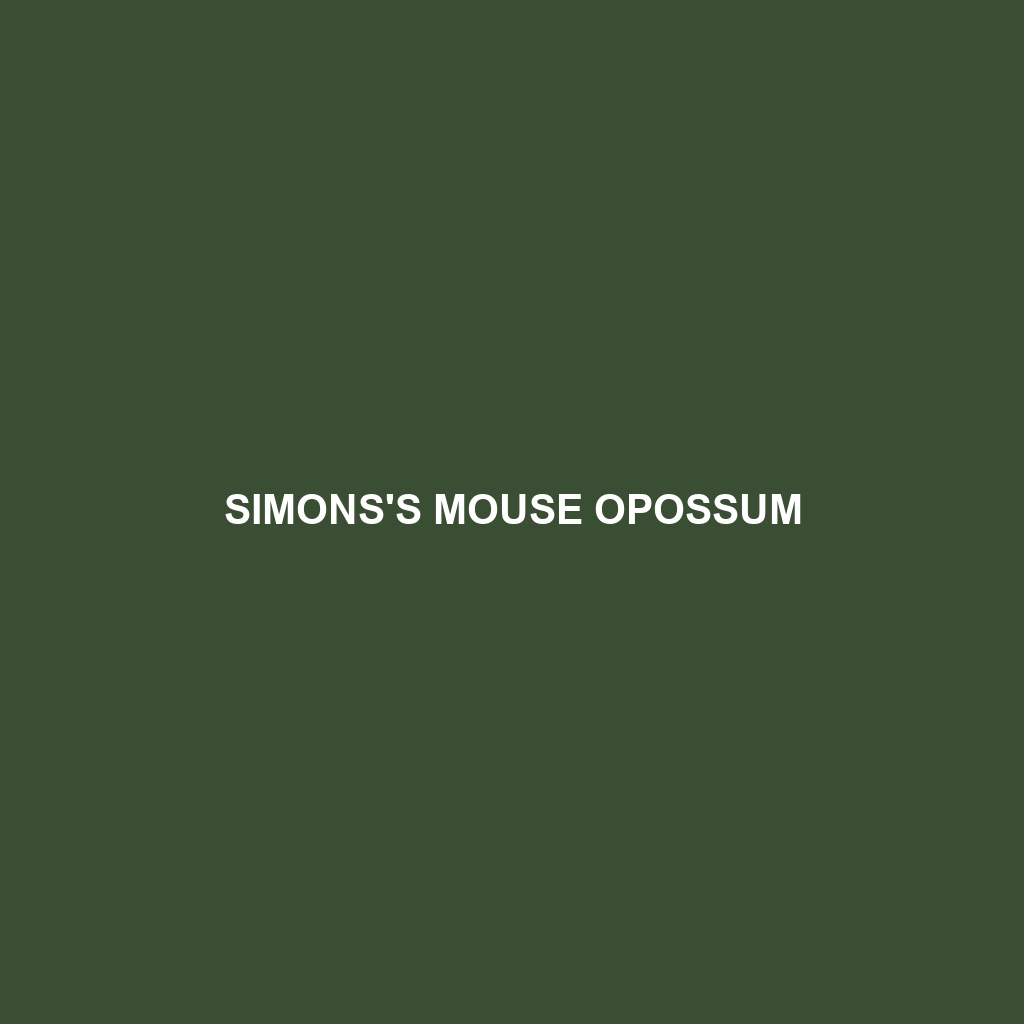Simons’s Mouse Opossum (Marmosa simonsi)
Simons’s Mouse Opossum, scientifically known as Marmosa simonsi, is a small marsupial native to South America’s tropical and subtropical regions. This elusive and nocturnal creature is named after its discoverer, and it is notable for its agile movements and distinctive physical and behavioral traits.
Physical Characteristics
Size: Simons’s Mouse Opossum is relatively small, with adults typically measuring between 10-15 cm (4-6 inches) in body length, excluding the tail, which can be almost equal to or longer than the body.
Coloration: The fur of Simons’s Mouse Opossum is usually a blend of brown and gray on the dorsum (back), with a lighter, cream or white ventrum (underside). The tail is prehensile and often displays a slightly darker coloration towards the tip.
Special Features: This opossum has large, forward-facing eyes that aid in nocturnal vision. It possesses sharp claws and a prehensile tail, both of which are vital for climbing and navigating through trees.
Behavioral Traits
Social Interactions: Simons’s Mouse Opossum tends to be solitary, primarily interacting with others during the breeding season. They are known to be territorial and use scent markings to delineate their territory.
Feeding Habits: This species is omnivorous, feeding on a varied diet that includes insects, small vertebrates, fruits, and nectar. Their keen sense of smell helps them locate food in the dark.
Ecological Roles: As both predator and prey, they play a crucial role in their ecosystem. They help control insect populations and serve as food for larger predators, contributing to the balance of their habitat.
Habitat and Adaptations
Habitats: Simons’s Mouse Opossum inhabits diverse environments, ranging from lowland tropical forests to montane regions. They are adept at living both in trees (arboreal) and on the ground (terrestrial).
Adaptations: Their prehensile tail and sharp claws make them excellent climbers, essential for navigating the dense forest canopy. Their nocturnal lifestyle helps them avoid many daytime predators, and their keen senses aid in nighttime foraging.
Conservation Status
Conservation Status: Currently, there is limited data on the population trends of Simons’s Mouse Opossum. However, they are not listed as endangered. Habitat destruction due to deforestation poses a potential threat, and ongoing habitat preservation is vital for their continued survival.
Fun Facts
Reproduction: Like other marsupials, female Simons’s Mouse Opossums have a pouch where they carry and nurse their young until they are developed enough to survive independently.
Agility: These opossums are incredibly agile and can leap significant distances between branches, an adaptation that helps them evade predators.
Diverse Diet: Their omnivorous diet allows them to adapt to various food sources available in their changing habitats, making them highly adaptable to different environmental conditions.
Simons’s Mouse Opossum is a fascinating example of the diverse and adaptive wildlife that inhabits South America’s rich ecosystems. Protecting their habitats ensures the preservation of these unique creatures and the intricate balance of their ecological communities.
